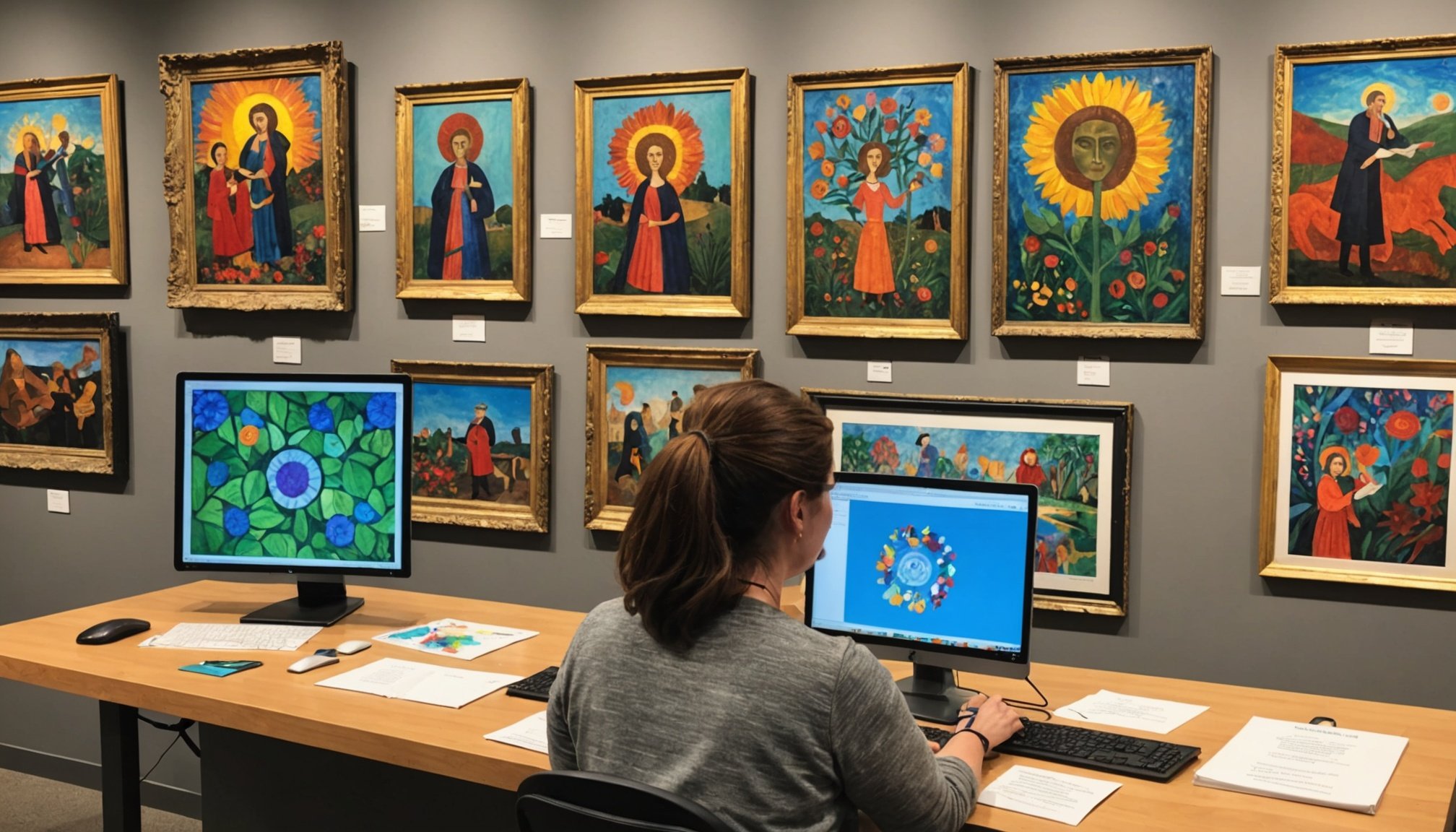Overview of Creative Therapeutic Programs in Museums
Creative therapeutic programs in museums offer enriching experiences that support mental health by encouraging art engagement. These programs are designed to harness the power of creative activities in a museum setting to promote well-being and healing. Through these initiatives, individuals are given opportunities to participate in art-making, viewing, and interactive sessions that utilise creativity as a therapeutic outlet.
The importance of art engagement in mental health therapy is profound. Art serves as a universal language that can break down barriers, allowing individuals to express themselves in ways words often cannot. This form of therapy utilises various arts, including visual arts, music, and drama, to facilitate emotional expression and mental health support.
Also to read : Create your blissful morning routine: a mindfulness blueprint for stress reduction
A range of programs is offered in museums to cater to diverse needs. These programs may include directed art activities, open studio sessions, and guided museum tours focused on reflective and emotional dialogue. Each program typically aims to improve mental well-being by fostering self-expression, reducing stress, and enhancing self-esteem.
In addition to aiding personal growth, creative therapeutic programs also provide social opportunities, enabling participants to build connections with others who share similar experiences or interests. This sense of community can be particularly beneficial in reducing feelings of isolation and promoting positive emotional health.
Additional reading : Unveiling the synergy: the impact of biophilic design on employee well-being in the workplace
Implementing Creative Therapeutic Programs
Implementing creative therapeutic programs in museums requires meticulous planning and strategic execution. This process involves several essential steps to ensure the programs are effective and sustainable within the museum’s framework. The key to successful implementation lies in integrating these programs smoothly into existing museum operations while fostering an environment conducive to art therapy.
Key Steps in Implementation
Successful program implementation begins with identifying the museum’s objectives for offering art therapy. Clear goals streamline the planning process, helping museums tailor their programs to address specific mental health needs. Essential components include designing activities that leverage the therapeutic potential of art, developing schedules that align with visitor patterns, and ensuring that spaces are appropriately equipped for various artistic endeavors.
Collaborations with Mental Health Professionals
Forming partnerships with mental health professionals is critical to the success of therapeutic initiatives. These collaborations bring expertise in crafting programs that effectively support mental health improvement. Mental health professionals contribute by guiding program design, ensuring therapeutic methods are evidence-based, and training museum staff to facilitate activities with sensitivity and understanding.
Training for Museum Staff
Effective training for museum staff is indispensable. Staff must comprehend therapeutic practices and be adept at communicating with participants compassionately. Training equips them to handle diverse needs, react to individual situations appropriately, and provide a supportive environment that encourages self-expression and emotional wellness.
Case Studies of Successful Programs
In examining program case studies for creative therapeutic programs in museums, the success stories provide valuable insights. A notable example can be observed in the Museum of Modern Art (MoMA) in New York, which has developed the “MoMA Art Lab” series. This initiative highlights how structured art activities can lead to positive therapeutic outcomes.
Participants have often shared their testimonials about how these sessions alleviate stress and foster a sense of community. Many cite increased confidence and improved social skills as direct benefits. These stories reveal how art can transform personal experiences into collective, healing journeys.
Therapeutic outcomes are further emphasised through measurable changes in mental health indicators. Studies conducted alongside these programs often track reductions in anxiety and depression levels. For example, museum-goers who engaged regularly in art therapy sessions reported a marked improvement in their overall mental health.
Additionally, quantitative assessments validate the impact of these programs. Metrics include attendance rates, participant feedback, and pre- and post-program psychological evaluations. Such rigorous evaluation methods help museums refine their offerings to ensure they meet the evolving needs of their communities. By learning from these exemplary programs, other museums can implement effective strategies to similarly enhance mental health support through art.
Benefits of Art Engagement for Mental Health
Engaging in art holds numerous benefits for mental health improvement. It provides a therapeutic outlet for individuals to express emotions non-verbally, promoting greater visitor well-being. Artistic activities can lower stress levels, enhance mood, and foster mindfulness, which are crucial for managing mental health. Through the creative process, participants often experience a sense of achievement and empowerment.
Socially, art engagements offer opportunities to build connections. Group art sessions create avenues for participants to interact, share experiences, and develop friendships, addressing potential concerns of loneliness and isolation. These interactions contribute to community building, providing psychological support through shared creative expression.
Moreover, art encourages emotional exploration and self-discovery. Engaging in different forms of art allows individuals to explore personal narratives and emotional depth, often leading to revelations about internal conflicts or unresolved emotions. This introspection can be pivotal in personal growth and recovery, fostering a healthier mental state.
Through all these facets, art engagement benefits both the individual and broader community. It underscores the transformative potential of art in enhancing mental health services, ultimately creating an environment where individuals feel supported and motivated to delve into their emotional selves creatively.
Facilitating Mental Health Awareness Through Art
Creating space for mental health awareness in museum settings can have significant community benefits. Community outreach programs can educate visitors while promoting understanding and empathy. These initiatives encompass various activities designed to engage public interest and dismantle stigma associated with mental health discussions.
Community Events and Workshops
Museums organize community events and workshops to encourage open dialogue about mental health awareness. Such gatherings provide platforms where visitors can engage with mental health topics comfortably. By offering an array of activities, from talks to interactive sessions, museums enable individuals to learn and share their experiences freely.
Collaborative Art Projects
Collaborative art projects are powerful tools for advocating for mental health awareness. Participants can contribute to collective artworks that reflect community stories and struggles. These projects not only nurture creativity but also empower participants by validating their experiences and promoting a sense of belonging.
Educational Programs for Visitors
Educational programs within museums play a pivotal role in raising mental health awareness. Tailored to diverse audiences, these programs provide valuable insights into mental health challenges and strategies to manage them. By integrating informative content with artistic expression, museums allow visitors to gain a nuanced understanding of mental health and its impact on everyday life.
Challenges and Considerations in Program Development
Designing creative therapeutic programs in museums poses unique challenges, demanding careful thought to ensure mental health support remains robust and effective. One significant hurdle involves recognizing and addressing program challenges and potential barriers to participation. Mental health considerations necessitate creating an inclusive environment that appeals to diverse audiences while tackling societal stigmas.
Resource allocation poses a persistent challenge. Securing sustainable funding is essential, as it directly impacts the availability and quality of programs. Creative solutions, such as partnerships with local businesses or community organizations, can supplement museum funding and ensure these programs thrive.
Museum limitations may arise from space constraints or staff capacity, affecting the breadth of programs offered. It is crucial to develop adaptable strategies that maximize space utility and effectively engage participants. Additionally, ensuring accessibility for individuals with disabilities is essential for inclusive participation.
Flexibility in program design also plays a pivotal role. Tailoring activities to cater to varying emotional and cognitive abilities enables museums to reach a broader demographic. This adaptability ensures that participants can fully benefit from the mental health support provided by these initiatives.
Navigating these complexities demands thoughtful consideration and continuous evaluation to refine approaches and strengthen program efficacy.

